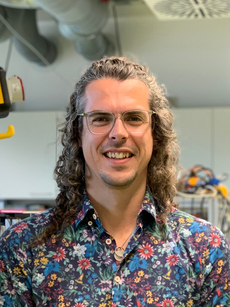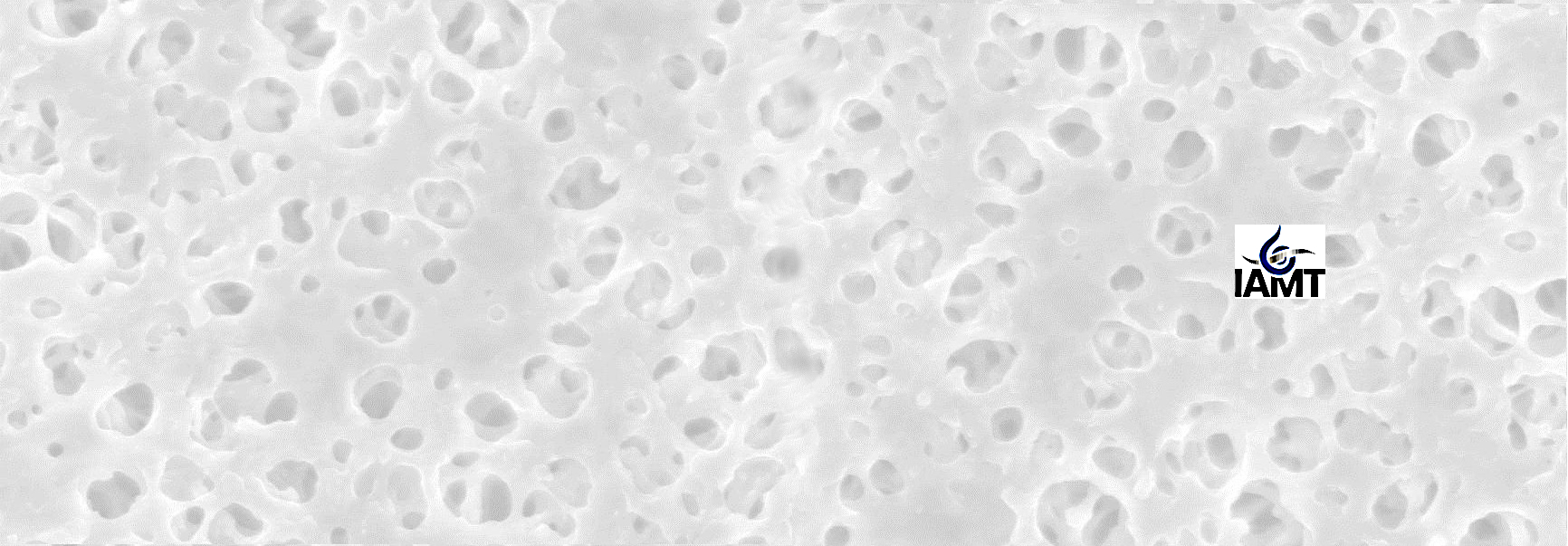
Dr. Tyler Malkoske
- Postdoctoral researcher
- Room: 218, Bldg. 352
- Phone: +49 721 608 24361
- tyler malkoske ∂does-not-exist.kit edu
Karlsruhe Institute of Technology
Institute for Advanced Membrane Technology
Hermann-von-Helmholtz-Platz 1
76344 Eggenstein-Leopoldshafen
Germany
Climate change, emerging contaminants, population growth, and urbanization represent acute challenges to the provision of safe drinking water globally. Membranes are among the best available treatment technologies for sustaining access to safe drinking water in the face of these challenges, and will play a key role in realizing United Nations Sustainable Development Goal (SDG) 6.1: `By 2030, achieve universal and equitable access to safe and affordable drinking water for all´. Continued research and development is required for membrane technologies to reach their full potential, and enable humanity to meet the most pressing drinking water needs today and into the future.
Employment |
|
|
Since 10/2023 |
Postdoctoral Researcher, Karlsruhe Institute of Technology (KIT), Institute for Advanced Membrane Technology (IAMT), Germany |
|
09/2017 – 09/2023 |
Teaching Assistant, Department of Civil and Mineral Engineering, University of Toronto, Canada |
|
09/2021 – 12/2021 |
Sessional Instructor, Department of Civil and Mineral Engineering, University of Toronto, Canada |
|
10/2011 – 02/2012 |
Field Researcher, iDE (International Development Enterprises), Phnom Penh, Cambodia |
|
05/2008 – 09/2011 |
Project Engineer-in-Training, Water Technology Group, GENIVAR, Winnipeg, Canada |
|
|
|
Education |
|
|
09/2017-09/2023 |
Doctor of Philosophy (PhD), Environmental Engineering, University of Toronto, Toronto, Canada |
|
09/2014 – 09/2016 |
Master of Engineering (MEng), Environmental Engineering, Tongji University, Shanghai, China |
|
09/2003 – 05/2008 |
Bachelor of Science (BASc), Civil Engineering, University of Manitoba, Winnipeg, Canada |
|
|
|
Research Projects |
|
|
Sustainable treatment of emerging contaminants using renewable energy powered nanofiltration/reverse osmosis (NF/RO) Coagulation pre-treatment to reduce membrane fouling Foulant-membrane interactions |
Publications |
| Malkoske, T. A., Bérubé, P. R., & Andrews, R. C. (2023). Leveraging coagulation mechanisms to reduce fouling and increase natural organic matter removal during coagulation/flocculation-ultrafiltration treatment. Separation and Purification Technology, 327, 124877, https://doi.org/10.1016/j.seppur.2023.124877 |
| Malkoske, T. A., Bérubé, P. R., & Andrews, R. C. (2023). Impact of extended versus typical rapid mixing HRTs on continuous-flow coagulation-ultrafiltration. Separation and Purification Technology, 319, 124041, https://doi.org/10.1016/j.seppur.2023.124041 |
| Malkoske, T. A., Bérubé, P. R., & Andrews, R. C. (2020). Coagulation/flocculation prior to low pressure membranes in drinking water treatment: a review. Environmental Science: Water Research & Technology, 6(11), 2993-3023, https://doi.org/10.1039/D0EW00461H |
| Tang, Y., Dong, L., Mao, S., Gu, H., Malkoske, T., & Chen, B. (2018). Enhanced photocatalytic removal of tetrabromobisphenol A by magnetic CoO@ graphene nanocomposites under visible-light irradiation. ACS Applied Energy Materials, 1(6), 2698-2708, https://doi.org/10.1021/acsaem.8b00379 |
| Tang, Y., Xin, H., Yang, S., Guo, M., Malkoske, T., Yin, D., & Xia, S. (2018). Environmental risks of ZnO nanoparticle exposure on Microcystis aeruginosa: Toxic effects and environmental feedback. Aquatic toxicology, 204, 19-26, https://doi.org/10.1016/j.aquatox.2018.08.010 |
| Tang, Y., Tian, J., Malkoske, T., Le, W., & Chen, B. (2017). Facile ultrasonic synthesis of novel zinc sulfide/carbon nanotube coaxial nanocables for enhanced photodegradation of methyl orange. Journal of Materials Science, 52, 1581-1589, https://doi.org/10.1007/s10853-016-0452-0 |
| Malkoske, T., Tang, Y., Xu, W., Yu, S., & Wang, H. (2016). A review of the environmental distribution, fate, and control of tetrabromobisphenol A released from sources. Science of the Total Environment, 569, 1608-1617, https://doi.org/10.1016/j.scitotenv.2016.06.062 |
| Xue, Z., Wang, T., Chen, B., Malkoske, T., Yu, S., & Tang, Y. (2015). Degradation of tetracycline with BiFeO3 prepared by a simple hydrothermal method. Materials, 8(9), 6360-6378, https://doi.org/10.3390/ma8095310 |
